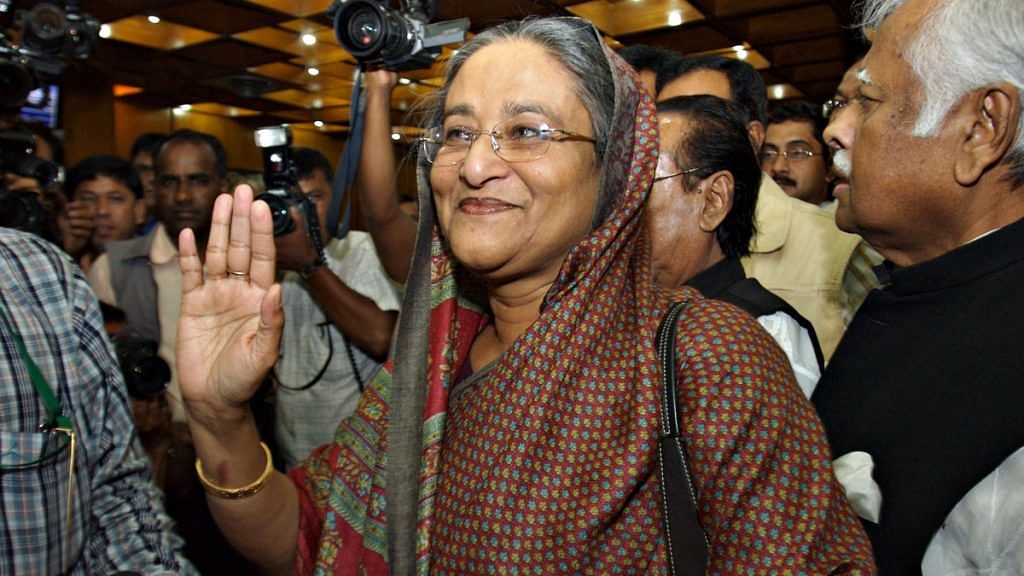There is every reason for India’s External Affairs Minister S. Jaishankar to be worried. The Narendra Modi government’s efforts to grant citizenship to religiously oppressed minorities from the three neighbouring Muslim-majority countries should not undermine his ministry’s efforts in firming up the relationship between India and Bangladesh.
The protests against the Citizenship (Amendment) Act or CAA are because the provisions have been misunderstood and much misinformation about the law has been circulated by opposition parties with ulterior political motives. But an entirely domestic matter will have serious external ramifications if it is not handled properly and quickly.
Going by the negative publicity generated by the anti-CAA protests in India, it would be very easy for anti-establishment forces in Bangladesh to raise a false alarm about the possible exodus into that country from India. Although there is not even a remote possibility of an exodus, it will only take the rumour mills in Bangladesh a few minutes to demolish the friendly relationship that the two countries have carefully cultivated since 1971 against so many odds.
Also read: ‘Why should Bangladeshis get job here’ — RSS Muslim wing head Indresh Kumar at pro-CAA event
A lot depends on Bangladesh
Of the three countries named in the CAA, Bangladesh and Afghanistan are good friends with a long and cordial relationship with New Delhi. Bangladesh shares a long border with India and even longer historical and cultural relationship. From an economic and strategic point of view, no other country in the neighbourhood is as important as Bangladesh is to New Delhi. The success of the coveted Look East Act East policy and any regional trade forum in lieu of the Regional Comprehensive Economic Partnership (RCEP) or the furtherance of the BIMSTEC agenda depends heavily on New Delhi’s relationship with Dhaka.
Both countries launched four new projects in March 2019 and inaugurated 36 community clinics and 11 water treatment plants. India also extended the National Knowledge Network to Bangladesh to connect independent scholars and research institutes to their Indian counterparts. In October, three more projects – import of LPG from Bangladesh, Vivekananda Bhavan at the RK Mission in Dhaka, and the inauguration of Bangladesh-India Professional Skill Development Institute at Institute of Engineers in Khulna, were rolled out.
While the South Block is no doubt busy churning out projects, the perception, probably due to past inertia, that India talks more and does little, seems to be amplifying the gaps in New Delhi’s relationship with Dhaka. None other than Minister Jaishankar himself has pointed this out, in his recent speech at the Raisina Dialogue 2020.
Also read: Mujibur biopic offers Modi govt another chance to mend ties with Bangladesh
The Chinese puzzle
It is no secret that economists managing the multi-trillion-dollar Chinese economy would want the entire world to be their market and have easy access to resources all over the world. Bangladesh is no exception. Beijing has upgraded its economic cooperation to a higher level of strategic partnership. This is far greater progress considering Beijing was not very comfortable with Bangladesh’s liberation in 1971.
But while moving closer to Dhaka, China has also tightened its grip over Pakistan through the China Pakistan Economic Corridor (CPEC), thus gaining total control over Gwadar Port. Now, China has two strategic outposts in the Indian Ocean – Chittagong and Gwadar – besides Hambantota in Sri Lanka, closely monitoring the important sea lanes of communication that extends from the Persian Gulf to the Malacca Strait.
More importantly, in what has been seen as a ‘blatant act of provocation’, China has invested $38 billion in Bangladesh and supplied Ming-class Type 035B submarines to Bangladesh Navy. Quickly responding to this deal, India has agreed to provide $500 million line of credit to facilitate Bangladesh Army to upgrade its defence systems and acquire more military hardware.
Also read: Modi govt wants Bangladesh to buy imported onions after states withdraw demand
Eyes on Bangladesh
Even as Beijing was courting Dhaka, India and Bangladesh signed a number of deals during Prime Minister Sheikh Hasina’s recent visit. Besides signing as many as seven agreements, India agreed to assist Bangladesh with the issue involving Rohingya refugees who have had to flee Myanmar to escape persecution. During Sheikh Hasina’s previous visit in 2017, New Delhi and Dhaka had entered into a civil nuclear and defence cooperation agreement. India does not have a similar agreement with any other neighbour, which signals the importance of Bangladesh in New Delhi’s security calculations in the region. Over and above the existing $3 billion, New Delhi has extended $4.5 billion line of credit to Dhaka, which will take care of a number of infrastructure projects.
Notwithstanding all these initiatives, New Delhi still feels the heat of hostile public opinion that seems to limit the success of the relationship only to a possible signing of the Teesta water-sharing treaty. Another major irritant is the issue of illegal migrants, including the unwelcome Rohingya exodus rising to alarming proportions.
The Modi government must see to it that as it goes about quelling the anti-CAA protests, Bangladesh is in the back of its mind. Unlike China, the language and communication should not be a major hurdle for New Delhi to assure the academic and strategic community in Bangladesh that it is not in India’s interest or agenda to turn the area into an arena of fierce geopolitical contest between India and China.
The author is a member of the National Executive Committee of the BJP and former editor of Organiser. Views are personal.
